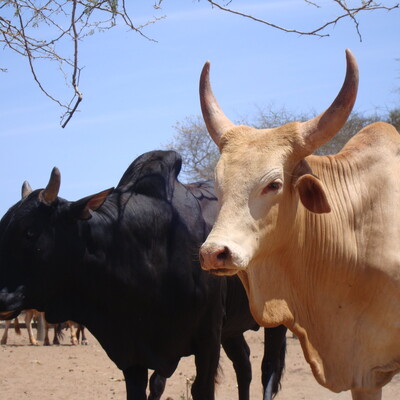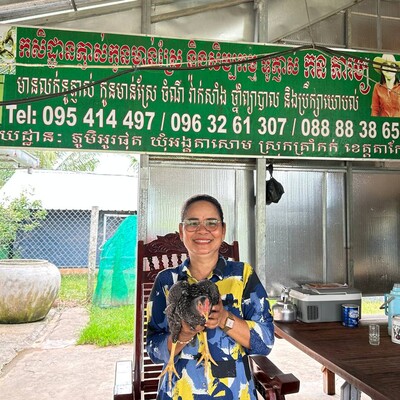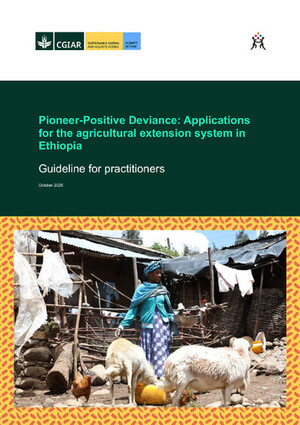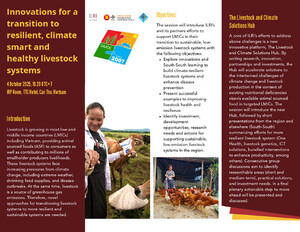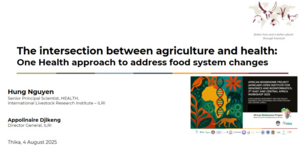
Understanding the dynamics of empowerment among rural women in Ethiopia
Written by Annet Mulema

A woman dairy farmer in Ada’a District, Oromia, Ethiopia (photo credit: ILRI/Zerihun Sewunet).
Local sociocultural norms and an individual’s ability to meet socially constructed roles determine our understanding of the ‘empowerment’ of women and men in rural communities.
These were the findings of a study in Ethiopia that tested the suitability of existing survey-based Women’s Empowerment in Agriculture Index (WEAI) domains and indicators (including production, resources, leadership, income, and time and labour allocation) in measuring women’s empowerment in agricultural development projects[1]. The project-level domains and indicators for measuring women’s empowerment were developed by researchers at a workshop held in January 2016 in Nairobi, Kenya.
In agriculture, empowerment is defined as one’s ability to make decisions related to farming as well as his or her access to the materials and resources they need to implement those decisions. Empowerment is key in enabling women to realize their rights which in turn drives inclusive economic growth and welfare standards. But women’s empowerment has often been measured using quantitative measures which cannot accurately explain the ‘why’ and ‘how’.
Local understandings of empowerment have not been fully understood by researchers, making it difficult for them to define criteria for measuring it in different environments. The study found that empowerment was defined by criteria such as the ability to: meet socially constructed roles, participate in diverse livelihood activities, adopt technology, create wealth by saving and investing, acquire knowledge, conduct oneself well and be accepted by the community, actively participate in meetings, manage one’s time efficiently and use family planning methods (for women). Both female and male group discussion participants associated empowerment with the ideal characteristics of a woman or man when describing an empowered individual.
During the course of the research, some of the WEAI indicators—such as the role of mobility of women in empowerment—were contested by both men and women in the study. Following discussions with communities, new indicators of empowerment considered important to women emerged, such as the possession of knowledge and the holding of leadership positions. The researchers concluded that:
- The pathway to women’s empowerment involves negotiations between the ideals of femininity (as defined by the community) and individual desires, which may be in direct conflict with each other. Women negotiate their actions in the face of social norms; either to conform or flout in order to make a choice and act upon their choices.
- Empowerment includes traits that are difficult to quantify but can be described and characterized according to local standards (e.g. knowledge, confidence, conduct, intra-household relationships, freedom of mobility etc.). This makes qualitative methods more ideal for fully understanding context-specific issues, which can be used to complement quantitative results.
- The number and importance of empowerment traits (as perceived by the resource persons) determines who will be considered empowered or disempowered. The important characteristics that define one as empowered need to be fleshed out together with community members.
- Institutions such as courts of law are very important in helping women claim their rights over assets/resources. Therefore, understanding the institutions within which women and men pursue their livelihoods provides a proper understanding of the enabling/disabling environment.
Researchers, however, caution that while empowerment may bring about positive changes in women’s lives, some of its effects may be negative and measures are needed to avoid its unintended consequences.
Scientists from the Food and Agriculture Organization of the United Nations, the International Livestock Research Institute, the International Water Management Institute and Makerere Univeristy carried out the research under the Gender, Agriculture and Assets Project Phase 2 (GAAP2) in Adami Tulu and Yaya Gulele woredas in the Oromia region from July–August 2017. The United Nations Joint Program on Accelerating Rural Women’s Economic Empowerment in Ethiopia, one of the projects in the GAAP2 portfolio, was the case study.
These findings are a step towards investigating the context-specific dimensions of women empowerment using qualitative methods, which will later be used to develop a project-level women’s empowerment in agriculture index (Pro-WEAI).
Read more about Using qualitative methods to understand the local meaning of women’s empowerment in Ethiopia
[1] http://weai.ifpri.info/weai-resource-center/guides-and-instruments/








